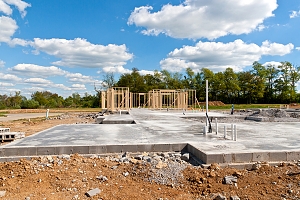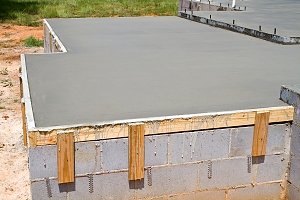Subgrade preparation is a critical aspect of concrete slab construction. Neglecting proper subgrade preparation can lead to costly repairs, structural issues, and reduced lifespan of the slab. Le’ts explore the importance of subgrade preparation and provide a comprehensive guide to achieving a solid foundation for your concrete slabs.
Understanding Subgrade Preparation
Definition and Role
 The subgrade refers to the natural soil or compacted fill material beneath the concrete slab. Its primary role is to provide support, stability, and uniform bearing capacity to the slab. By distributing the loads evenly, a well-prepared subgrade prevents excessive settlement or differential movement.
The subgrade refers to the natural soil or compacted fill material beneath the concrete slab. Its primary role is to provide support, stability, and uniform bearing capacity to the slab. By distributing the loads evenly, a well-prepared subgrade prevents excessive settlement or differential movement.
Factors Affecting Subgrade Performance
Several factors can influence the performance of the subgrade. Soil type, moisture content, compaction, and drainage conditions all play a crucial role. It is vital to assess these factors accurately to determine the appropriate subgrade preparation techniques.
Common Subgrade Problems
Inadequate subgrade preparation can lead to a range of problems for concrete slabs, with settlement and heaving being the most common issues. Settlement occurs when the subgrade sinks, causing unevenness in the concrete slab. This uneven settling not only creates unsightly surfaces but also poses tripping hazards and compromises the structural integrity of the concrete over time.
Additionally, settlement can result in voids and gaps beneath the slab, further weakening its load-bearing capacity. On the other hand, heaving happens when the subgrade expands due to moisture changes, leading to cracks and displacement of the concrete. Poor drainage or moisture management in the subgrade soil is often the cause of heaving. The pressure exerted by heaving can result in uneven surfaces, tripping hazards, and differential movement of adjacent sections of the slab.
Both settlement and heaving reduce the concrete slab’s durability by creating cracks and openings for water infiltration, increasing vulnerability to deterioration from freeze-thaw cycles and chemicals.
Steps for Subgrade Preparation
Site Evaluation and Soil Testing
 Before commencing subgrade preparation, a thorough site evaluation is essential. Soil testing helps determine the properties of the subgrade, such as its load-bearing capacity and soil composition. This information is crucial for selecting appropriate preparation techniques.
Before commencing subgrade preparation, a thorough site evaluation is essential. Soil testing helps determine the properties of the subgrade, such as its load-bearing capacity and soil composition. This information is crucial for selecting appropriate preparation techniques.
Excavation and Grading
Excavation involves removing any existing material, such as topsoil, vegetation, or debris, from the subgrade area. The depth and dimensions of the excavation depend on factors like the desired slab thickness and any required subbase layers. Grading ensures a level and uniform subgrade by redistributing the excavated soil.
Compaction Requirements
Proper compaction of the subgrade is vital to achieve stability and prevent future settlement issues. Compaction can be done using various techniques, including mechanical compactors or vibrating plates, depending on the soil type and moisture content. Compaction tests can be conducted to verify the desired level of compaction.
Soil Stabilization Techniques
In cases where the soil exhibits poor bearing capacity or excessive moisture, soil stabilization techniques may be necessary. Chemical stabilization involves adding additives to improve the soil’s strength and stability. Mechanical stabilization, on the other hand, involves introducing geogrids or geotextiles to reinforce the subgrade.
Drainage Considerations
Proper drainage is critical to prevent moisture accumulation, which can adversely affect the subgrade and the concrete slab. Installing effective drainage systems, such as perforated pipes or French drains, helps redirect water away from the subgrade area.
Subgrade preparation is a critical aspect of concrete slab construction. Neglecting proper subgrade preparation can lead to costly repairs, structural issues, and reduced lifespan of the slab.
Contact The Northern Virginia Subgrade Preparation Experts
By following these steps, you can ensure that your subgrade is well-prepared for the concrete slab. In the next part of this blog post, we will explore best practices, common challenges, and the importance of quality control in subgrade preparation.
If you need assistance with installing your subgrade foundation, get in touch with the subgrade and fill dirt professionals. For more on residential construction, please get in touch with Dirt Connections today by giving us a call or sending us a message online.









































